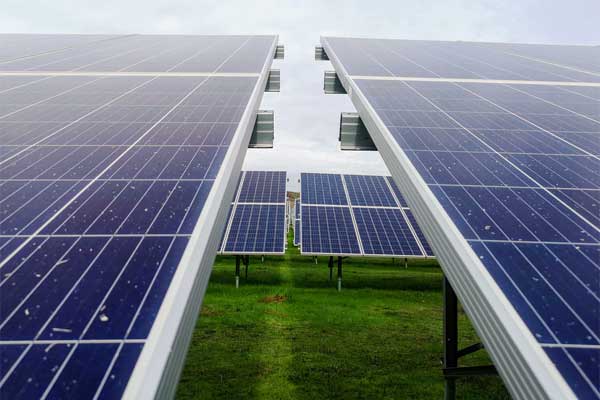The great inventor Thomas Edison once said, “So long as the sun shines, man will be able to develop power in abundance.” His wasn’t the first great mind to marvel at the notion of harnessing the power of the sun; for centuries inventors have been pondering and perfecting the way to harvest solar energy.
They’ve done an amazing job with photovoltaic cells which convert sunlight directly into energy. And still, with all the research, history and science behind it, there are limits to how much solar power can be harvested and used — as its generation is restricted only to the daytime.
A University of Houston professor is continuing the historic quest, reporting on a new type of solar energy harvesting system that breaks the efficiency record of all existing technologies. And no less important, it clears the way to use solar power 24/7.
“With our architecture, the solar energy harvesting efficiency can be improved to the thermodynamic limit,” reports Bo Zhao, Kalsi Assistant Professor of mechanical engineering and his doctoral student Sina Jafari Ghalekohneh in the journal Physical Review Applied. The thermodynamic limit is the absolute maximum theoretically possible conversion efficiency of sunlight into electricity.
Finding more efficient ways to harness solar energy is critical to transitioning to a carbon-free electric grid. According to a recent study by the U.S. Department of Energy Solar Energy Technologies Office and the National Renewable Energy Laboratory, solar could account for as much as 40% of the nation’s electricity supply by 2035 and 45% by 2050, pending aggressive cost reductions, supportive policies and large-scale electrification.
How Does it Work?
Traditional solar thermophotovoltaics (STPV) rely on an intermediate layer to tailor sunlight for better efficiency. The front side of the intermediate layer (the side facing the sun) is designed to absorb all photons coming from the sun. In this way, solar energy is converted to thermal energy of the intermediate layer and elevates the temperature of the intermediate layer.
But the thermodynamic efficiency limit of STPVs, which has long been understood to be the blackbody limit (85.4%), is still far lower than the Landsberg limit (93.3%), the ultimate efficiency limit for solar energy harvesting.
“In this work, we show that the efficiency deficit is caused by the inevitable back emission of the intermediate layer towards the sun resulting from the reciprocity of the system. We propose nonreciprocal STPV systems that utilize an intermediate layer with nonreciprocal radiative properties,” said Zhao. “Such a nonreciprocal intermediate layer can substantially suppress its back emission to the sun and funnel more photon flux towards the cell.
We show that, with such improvement, the nonreciprocal STPV system can reach the Landsberg limit, and practical STPV systems with single-junction photovoltaic cells can also experience a significant efficiency boost.”
Besides improved efficiency, STPVs promise compactness and dispatchability (electricity that can be programmed on demand based on market needs).
In one important application scenario, STPVs can be coupled with an economical thermal energy storage unit to generate electricity 24/7.
“Our work highlights the great potential of nonreciprocal thermal photonic components in energy applications. The proposed system offers a new pathway to improve the performance of STPV systems significantly. It may pave the way for nonreciprocal systems to be implemented in practical STPV systems currently used in power plants,” said Zhao.
—
Publication Referenced in the Article:
Sina Jafari Ghalekohneh, Bo Zhao. Nonreciprocal Solar Thermophotovoltaics. Physical Review Applied, 2022; 18 (3) DOI: 10.1103/PhysRevApplied.18.034083
—
This article was written by the team at the University of Houston.










Comments